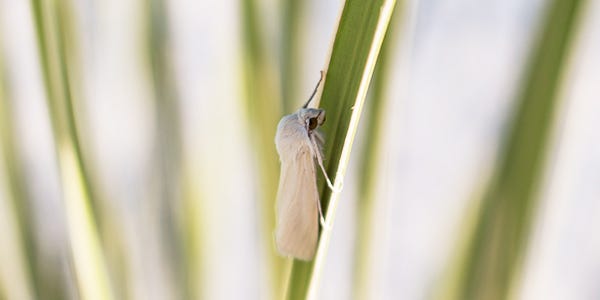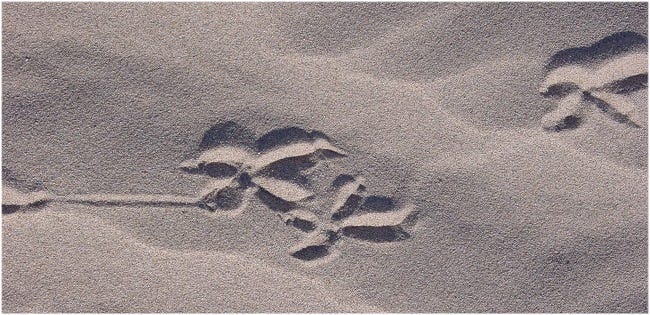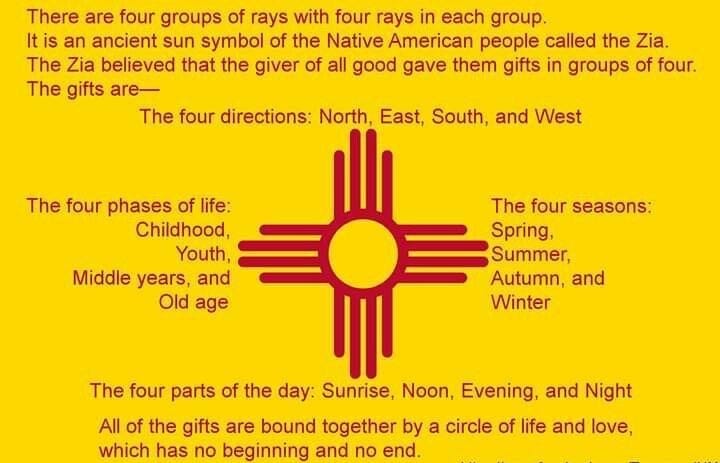Yucca Flower

The yucca flower was selected by the schoolchildren of New Mexico and was also recommended by the New Mexico Federation of Women’s Clubs as a symbol of New Mexico. It, therefore, was adopted as the official State Flower by the New Mexico State Legislature on March 14, 1927. The legislation does not specify a particular species of yucca (which consists of 40-50 different species) however, the New Mexico Centennial Blue Book from 2012 references the Soaptree Yucca (Yucca elata) as one of the more widespread species in the state.
The yucca is a symbol of resilience and strength in Native American culture. The roots of the plant were peeled and ground to produce a sudsy pulp. The pulp was mixed with water and used for soap or shampoo. Legend says that washing your hair with yucca shampoo makes the hair strands stronger and may even prevent baldness.
The yucca moth is the only pollinator of the yucca plant. They have a symbiotic relationship, and each depends on each other for the preservation of their species. The female moth collects pollen from the stamens (male part) of one plant and transfers it to the stigma (female part) of another. She then lays her eggs inside that yucca flower. When the eggs hatch, the larvae feed on some of the yucca seeds leaving enough seeds to perpetuate the yucca plant species.
Greater Roadrunner
There’s probably no more fitting State Bird than the Greater Roadrunner (Geococcyx californianus) is to New Mexico. New Mexico Legislature adopted it on March 16, 1949, after a group of fourth-grade students from an elementary school in Santa Fe lobbied for the roadrunner to be chosen as the state bird. The students believed that the roadrunner was a unique and important bird that represented the state’s desert environment.
About the time that the state legislature approved the bird as a symbol of New Mexico, Looney Tunes debuted the Road Runner cartoon (notice the character’s name is two separate words) and his adversary Wile E. Coyote. So, it is highly unlikely that the cartoon influenced any of those fourth graders into choosing the roadrunner.
The roadrunner is well adapted to the harsh desert environment of New Mexico as it can survive in extreme temperatures and can go for long periods without water. Much of the time, the bird gets all the moisture it needs from the food it eats. The bird’s long legs and strong toes allow it to run quickly over sandy terrain, and its wings are powerful enough to help it escape predators. It can run on foot at speeds up to 20 miles per hour. This can help it escape its natural predator, the coyote. Yes, the cartoon got that right. However, a coyote can run up to 43 miles per hour and will prey on roadrunners and so will racoons and raptors.
Notice in these pictures that the roadrunner has a white, blue and reddish patch behind his eye. This is colored skin. Most of the time, it’s not seen and covered up with feathers. The feathers move when the bird is agitated or excited.
Native American groups have said that the spirit of the roadrunner has supernatural powers. Hopi tribes used the “X” on Kachina figures to confuse evil spirits because the “X” footprint of a roadrunner doesn’t show which direction the bird is traveling. This prevents evil spirits from following. The bird has “zygodactyl” feet with two toes pointing forward and two toes pointing backward (similar to many species of parrot).
New Mexico’s Zia
I have to share the symbolism of New Mexico’s Zia since we’re talking about symbols of the Land of Enchantment. It’s beautiful in its simplicity.
Next time, we’ll finish up the Symbols of the Four Corner States by looking at Colorado’s State Flower and Bird.
Please subscribe to my Four Corners Newsletter about many things Southwest.
Please share with your friends and let them enjoy as well.










Great stuff, had no idea! Always find the coolest things